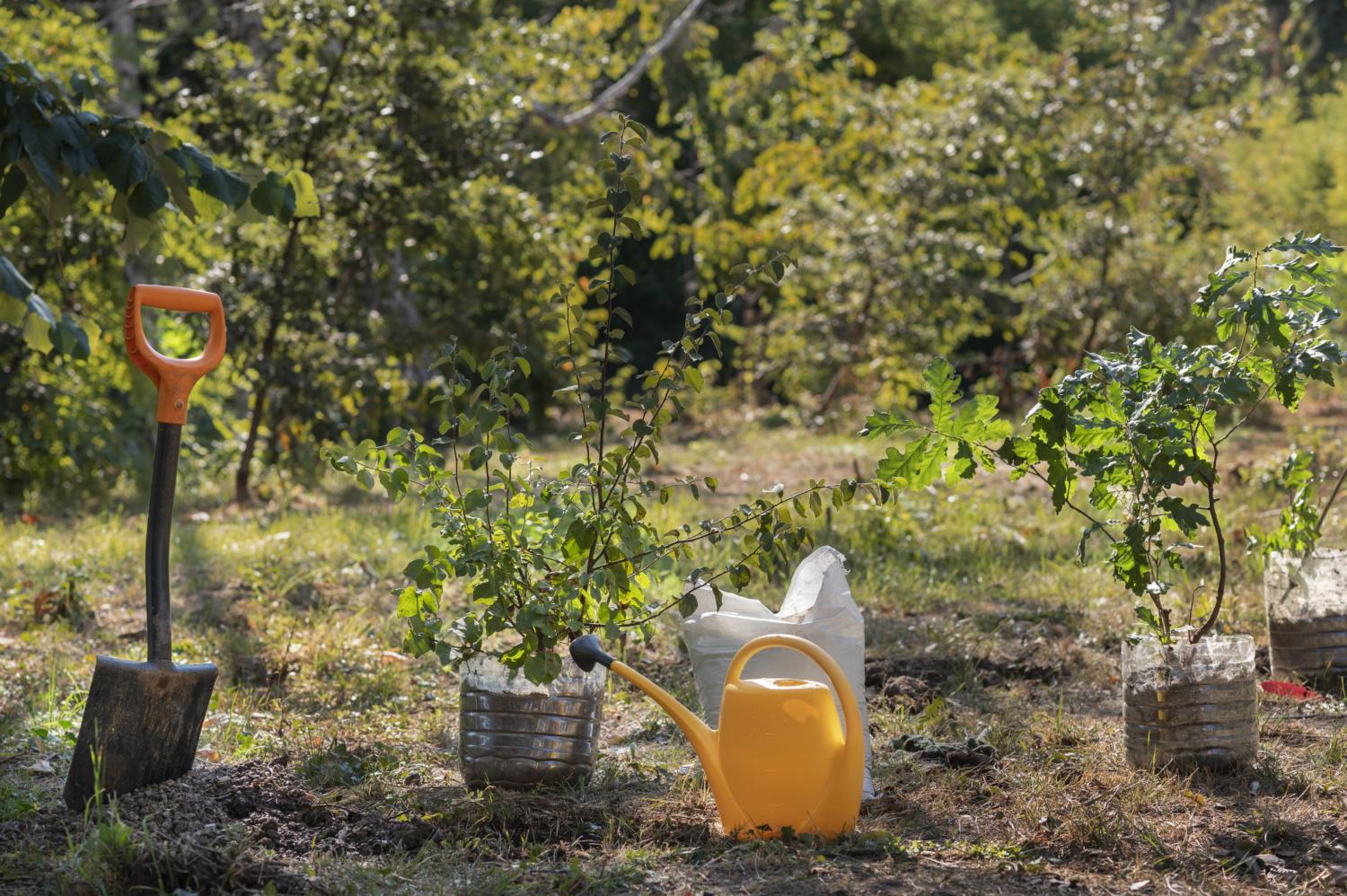
Over the last couple of months, we’ve been taking an in-depth look at what to consider when establishing fruit trees in a mini-garden or allotment orchard. In this, the final column on the topic, the focus is on how to choose from the numerous varieties of apples, pear, plums, etc. available and the best practice in actually getting the trees into the ground.
Choosing Fruit Varieties
There’s a lot to consider when choosing varieties. The first point to keep in mind, especially if you’ve space for several trees, is when the fruit will be ready. This is most important for apples and, to a lesser extent, pears. Some apple varieties like Discovery, are ripe as early as mid-August and will not keep much beyond mid-September. Other later keepers are usually picked at the end of October and can be stored in a cool place until February or March. Pears have similar ripening and eating times, but most will not keep beyond December. If you have space for only a few trees, it’s often best to choose so-called mid-season varieties— those ready to eat from early October through to around Christmas. Such varieties include Yorkshire’s very own Ribston Pippin, which originated from near Knaresborough in the eighteenth century, and the more modern Elstar, which can occasionally be found on supermarket shelves.
When it comes to planting supermarket types, Elstar is more of an anomaly than a rule. You should resist the temptation to choose most of the other varieties favoured by the big retailers. Pink Lady, Gala, Jazz, et al don’t thrive in Yorkshire’s climate. They also lack the flavour of many older varieties and are likely to be more disease prone. The same goes for plums—while a Victoria does have a lot going for it, most familiar pear varieties are only suitable with Conference and Comice cropping if it’s possible to give them a consistent sunny spot.
The key to success is not just going for a name that’s familiar from the shops, each fruit has a multitude of varieties so it’s worth thinking about which is best for your garden project. Resist the temptation to buy the fruit trees you see offered in glossy online adverts. The claims made are often fantastical and are unlikely to bear fruit (ba-dum). Think carefully about ‘family’ trees —these are one tree onto which several different varieties have been grafted— as not all varieties grow with the same vigour, so a family tree can easily become dominated by the strongest growing variety, to the detriment of its siblings.
Planting
Finally, once you have the trees, there’s the planting. Take care with this. In particular, do not plant the tree either too deeply or shallowly. If the scion (graft point) is buried too deep in the earth it can lead to the variety rooting rather than the rootstock. Too shallow planting, on the other hand, may make the tree susceptible to drought or wind rock. Most trees will need staking (fastening a young tree to an upright wooden beam in the ground) to anchor them during their early years. If planted where rabbits or deer are about, protection will be essential. Be cautious about adding compost to the planting hole. This can help on light soils, but on any that get soggy in winter it can be counterproductive. The improved soil conditions act as a sump to draw water to the planting hole rather than draining it away.
There’s a lot more that could be said about planting fruit trees. If you want to explore further the Royal Horticultural Society’s site is a great source of information. Also recommended is the down to earth advice on the website of local fruit nursery R V Roger of Pickering at www.rvroger.co.uk.











Add a comment